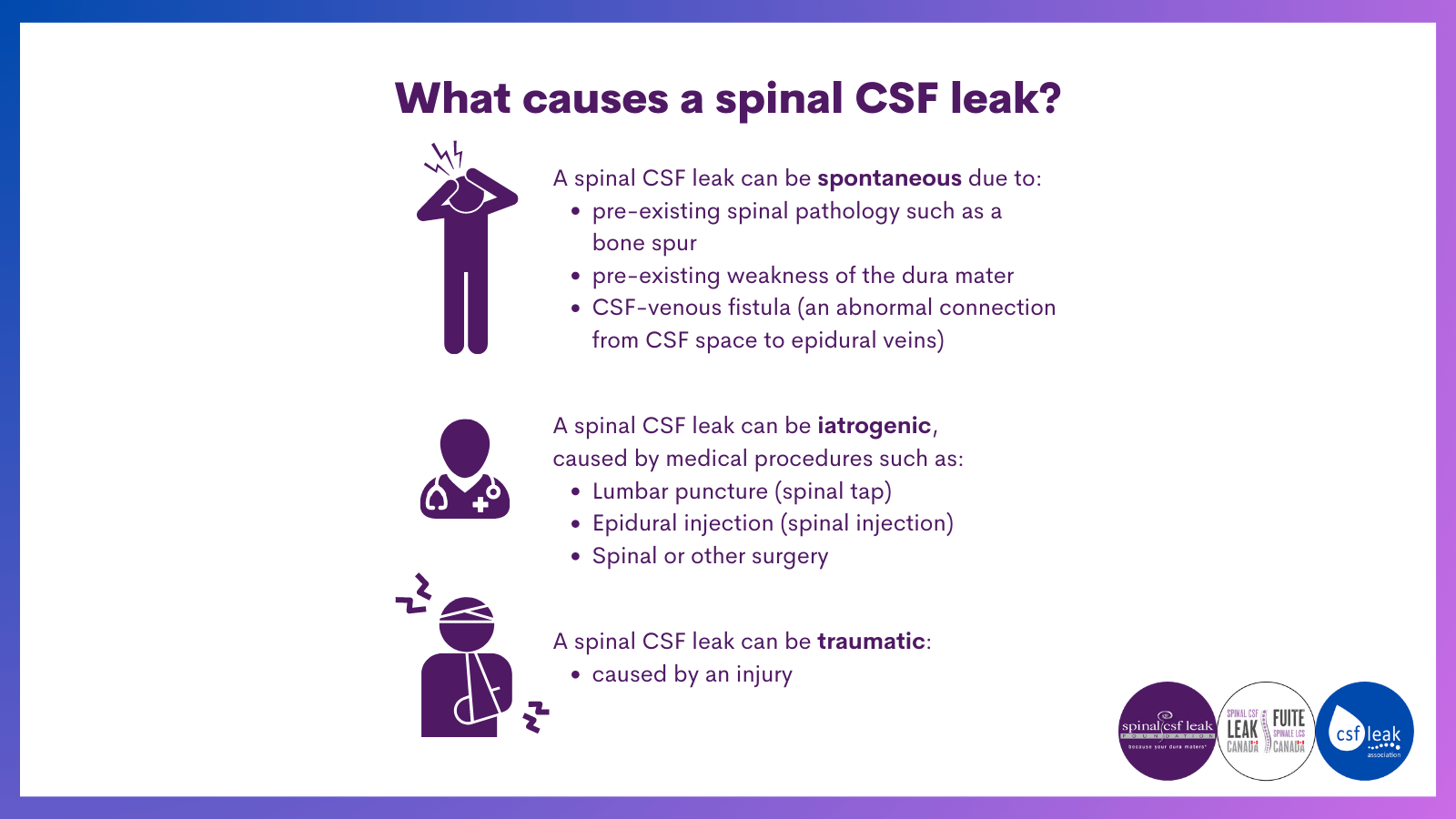LeakWeek Day Three: Causes

There are several known causes of intracranial hypotension (low volume of cerebrospinal fluid in the head) due to spinal CSF leak. They fall into three categories: spontaneous (occurring without warning), iatrogenic (caused by a medical procedure), or traumatic (caused by injury).
Spontaneous
Spontaneous spinal CSF leaks can occur without any apparent cause. Various events or mechanical factors have been reported to be associated with the onset of symptoms, including activities like lifting objects (both small and large), straining, stretching, changing positions, participating in sports, going on roller coaster rides, or experiencing falls. Some of these events can also be classified as traumatic.
Spontaneous CSF leaks in the spine may be linked to spinal issues such as calcified disc material or bone spurs. These leaks typically occur in the front (ventral) area of the spinal cord. Additionally, spontaneous leaks may be connected to preexisting weaknesses in the dura mater, the protective covering of the spinal cord.
Another cause of spontaneous leaks is CSF-venous fistula, an abnormal connection between the space containing CSF and veins outside the dura mater.
Although spontaneous spinal CSF leaks are uncommon, they are not rare. The annual incidence is estimated to be around 4 in 100,000, but this figure has not been extensively studied. Unfortunately, misdiagnoses and delayed diagnoses are common in this particular subset of patients.

Iatrogenic
The most common cause of an iatrogenic spinal CSF leak is a procedure called lumbar puncture. The head pain caused by a spinal CSF leak due to lumbar puncture is called a Post-Dural Puncture Headache (PDPH).
A lumbar puncture involves intentionally puncturing the dura mater in the lower back for diagnostic or therapeutic purposes. For example, it may be performed to collect cerebrospinal fluid for analysis and culture in suspected cases of meningitis or to inject contrast for myelography, a type of spinal imaging. Spinal anesthesia is another common therapeutic reason for lumbar puncture.
Often, the puncture site heals quickly, but there are many cases when it does not. Misdiagnosis and delayed treatment are common for patients whose symptoms do not immediately develop following an inadvertent puncture, but rather emerge over a longer period of time.
It’s worth noting that the risk of PDPH is lower when the procedure is performed by experienced clinicians, and especially when smaller, less traumatic needles are used.
Dural tears can also occur unintentionally during epidural injections, which target the space outside the dura and spinal cord in the spinal canal. These tears may also happen during spinal or other surgeries.
Another iatrogenic cause of intracranial hypotension resulting in a CSF leak is over-drainage of cerebrospinal fluid through a shunt. Additionally, there have been reports of spinal CSF leaks caused by chiropractic or other forms of spinal manipulation.
Traumatic
Traumatic leaks have been reported in association with brachial plexus injuries, spinal injuries, sports injuries, and falls.
Coming up tomorrow:
We celebrate “go purple day” and also the importance of self-care, with a stunning look at spinal CSF leak from the point of view of those who live with it.
Further information:
Spinal CSF Leak causes main page (Spinal CSF Leak Foundation)

